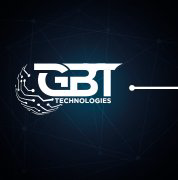
We could not find any results for:
Make sure your spelling is correct or try broadening your search.

GBT Technologies, Inc. ("GBT" and the "Company") is a development-stage company which considers itself a Native IoT creator, developing Internet of Things (IoT) and Artificial Intelligence-enabled mobile technology. The Company has a portfolio of Intellectual Property that when commercialized will i... GBT Technologies, Inc. ("GBT" and the "Company") is a development-stage company which considers itself a Native IoT creator, developing Internet of Things (IoT) and Artificial Intelligence-enabled mobile technology. The Company has a portfolio of Intellectual Property that when commercialized will include smart microchips, mobile application software, and supporting cloud software. The system contemplates the creation of a global network. The core of the system will be its advanced microchip technology that can be installed in any mobile device worldwide. GBT envisages this system as an internal, private network between all enabled mobile devices providing shared processing, advanced mobile database management/sharing and enhanced mobile features. Show more
| Period | Change | Change % | Open | High | Low | Avg. Daily Vol | VWAP | |
|---|---|---|---|---|---|---|---|---|
| 1 | 0.0001 | 100 | 0.0001 | 0.0002 | 0.0001 | 87989181 | 0.00014508 | CS |
| 4 | 0.0001 | 100 | 0.0001 | 0.0002 | 1.0E-6 | 61836928 | 0.00011678 | CS |
| 12 | 0.0001 | 100 | 0.0001 | 0.0002 | 1.0E-6 | 23428203 | 0.00011299 | CS |
| 26 | 0.000199 | 19900 | 1.0E-6 | 0.0002 | 1.0E-6 | 15799924 | 0.00010521 | CS |
| 52 | 0 | 0 | 0.0002 | 0.0002 | 1.0E-6 | 51272619 | 9.667E-5 | CS |
| 156 | -0.2343 | -99.9147121535 | 0.2345 | 0.3498 | 1.0E-6 | 43317626 | 0.0005322 | CS |
| 260 | -0.7048 | -99.9716312057 | 0.705 | 0.95 | 1.0E-6 | 27937514 | 0.00205328 | CS |
 canthelpit
2 days ago
canthelpit
2 days ago
 canthelpit
2 days ago
canthelpit
2 days ago
 canthelpit
2 days ago
canthelpit
2 days ago
 canthelpit
2 days ago
canthelpit
2 days ago
 canthelpit
2 days ago
canthelpit
2 days ago
 marylandstockguy
2 days ago
marylandstockguy
2 days ago
 marylandstockguy
2 days ago
marylandstockguy
2 days ago
 pitacorp
2 days ago
pitacorp
2 days ago
 pitacorp
2 days ago
pitacorp
2 days ago
 marylandstockguy
2 days ago
marylandstockguy
2 days ago
 canthelpit
2 days ago
canthelpit
2 days ago
 canthelpit
2 days ago
canthelpit
2 days ago
 canthelpit
2 days ago
canthelpit
2 days ago
 jay_tee
2 days ago
jay_tee
2 days ago
 canthelpit
2 days ago
canthelpit
2 days ago
 canthelpit
2 days ago
canthelpit
2 days ago
 marylandstockguy
2 days ago
marylandstockguy
2 days ago
 marylandstockguy
2 days ago
marylandstockguy
2 days ago
 canthelpit
2 days ago
canthelpit
2 days ago
 canthelpit
2 days ago
canthelpit
2 days ago
 canthelpit
2 days ago
canthelpit
2 days ago
 canthelpit
2 days ago
canthelpit
2 days ago
 Shareing is winning
2 days ago
Shareing is winning
2 days ago
 Shareing is winning
2 days ago
Shareing is winning
2 days ago

It looks like you are not logged in. Click the button below to log in and keep track of your recent history.
Support: +44 (0) 203 8794 460 | support@advfn.com
By accessing the services available at ADVFN you are agreeing to be bound by ADVFN's Terms & Conditions